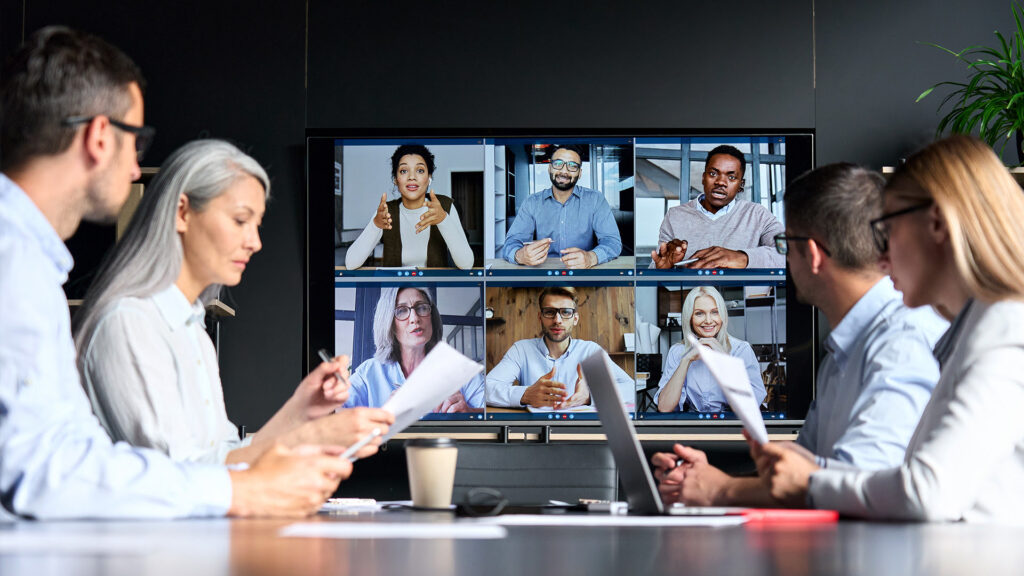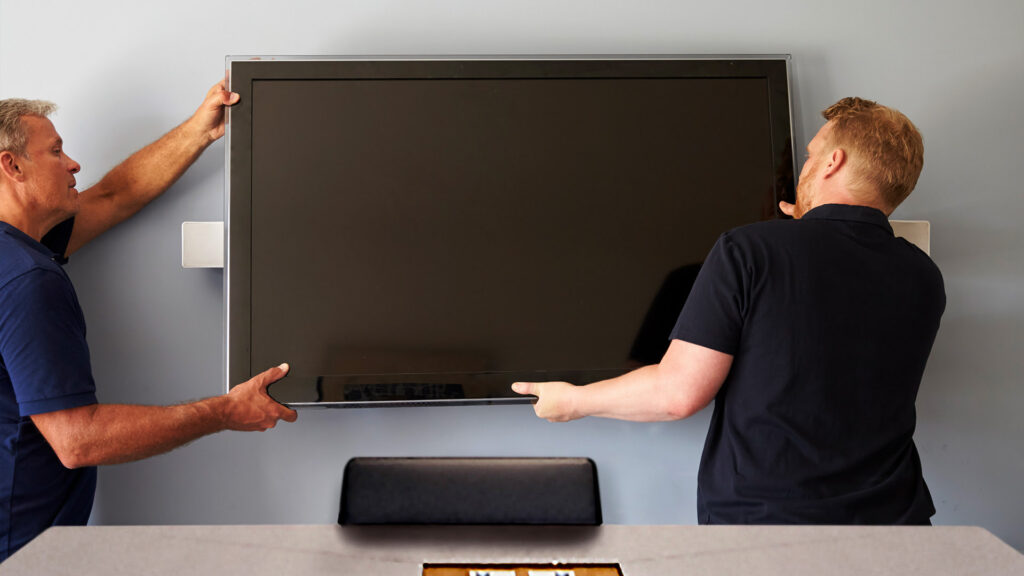5 Common Problems Solved by Using the Right Hybrid Meeting Equipment & Training
Hybrid is no longer the future of work—it’s now the norm. But many organizations still struggle to set up smooth and seamless hybrid meetings, due to various challenges. These range from technical difficulties to engagement issues among staff.
Below, we’ve outlined several of the most common problems that can be solved with the right hybrid meeting equipment and training.
What Are the Top Hybrid Meeting Challenges?
Hybrid meetings give your remote and in-office personnel the ability to connect seamlessly in real-time with video conferencing technologies. But these types of meetings are best facilitated by specific spaces and technologies—and your team will need to have the right skills and attitudes to successfully adopt the hybrid model.
That means hybrid meetings face a few common challenges, including:
- Tech solutions that don’t effectively meet employee needs
- A lack of end user training that hurts adoption
- Insufficient soft skills for employee success in hybrid environments
- The mistaken belief that more manual labor is required to use hybrid meeting equipment
- Failure to maintain and update hybrid workspaces as norms and standards evolve
Hybrid Meeting Benefits
But while these challenges are real and significant, they don’t outweigh the benefits of hosting hybrid meetings over an in-person meeting. Successfully configuring your workplace for hybrid meetings allows you to:
- Save money by using your corporate real estate more efficiently
- Help employees work in the ways that best serve them and the organization
- Enjoy better ROI from your technology investments
ET Group works with organizations of every size and in every industry to plan and implement custom hybrid workplace solutions. Below, you’ll learn more about some of the ways in which we solve the problems we outlined above.

Solution 1: Understanding Employee Needs Through Consulting
When your leadership and the rest of your team aren’t aligned on your organizational needs and goals, it’s impossible to invest in efficient hybrid and video conferencing meeting technology. This can hold many businesses back from smoothly transitioning to hybrid work.
The best way to fix this is by ensuring you understand the specific needs of your employees—but gathering this kind of feedback isn’t always easy. Consider working with a technology consultant who can connect with the various stakeholders in your organization and observe critical workflows to provide a clearer picture of your technology environment and the best ways to improve it.
Once you’ve done this, it’s easier to plan efficient technology investments—and ultimately move through the process of prototyping, testing, and designing them. The result is a hybrid environment that is built around the unique needs of the people who use it.
Learn more: How Audio Visual Consulting Provides Key Support for Hybrid Environments
Solution 2: Effective End User Training
Having the right technology is one thing, but getting your personnel to use it to its full potential is another. Many organizations have implemented hybrid solutions, only to find that they struggle with user adoption. How can you make sure you’re not one of them?
The answer to this problem lies in proper end user training. Team members who feel confident and prepared to use new technology are simply more likely to do so.
Learn more: Audio Visual Technology Adoption Starts with Better End User Training
For best results, this training should be adaptable for team members at all skill levels. This helps establish a baseline level of knowledge that the organization can use to guide policy conversations about hybrid technology.

Solution 3: Non-Technical Skills Training
Some of the skills your team members will need to thrive in a hybrid environment aren’t directly related to technology. Examples include:
- Effective written and verbal communication
- Virtual and remote meeting etiquette
- Being able to fill different roles in meetings (facilitators, note-takers, scribes etc.)
Team members who have these skills don’t just use video conferencing meeting technology more effectively—they also participate more meaningfully in meetings. The right workshops are as much about investigating team practices and navigating social contracts as they are about learning how to use software and equipment.
Solution 4: Using Automations to Solve Common Meeting Challenges
One of the most common worries that hold people back from fully embracing any new technology is the idea that it causes more problems than it solves. In the case of hybrid meeting tech, a common assumption is that operating and maintaining it requires more work than it saves.
Fortunately, this isn’t true. For example, ET Group’s tech solutions involve a support component that includes both remote and on-site assistance when required. Additionally, we can automatically gather data that helps you proactively address and avoid technical issues—while giving you insights into the best ways to improve your meeting rooms and the way you use them.
Some of the automations we commonly employ in hybrid meeting environments include:
- Automated room testing to restore default settings between meetings and standardize user experience
- Updates to software and firmware to avoid compatibility and security issues
- Analyzing usage patterns like average meeting length and attendance so that you can optimize your hybrid work practices
Learn more: How Remote Workplace Analytics Can Improve Hybrid Meeting Rooms
Solution 5: Continuous Feedback & Improvement
Finally, remember that creating an optimal hybrid meeting environment isn’t a “set it and forget it” task. Successful hybrid meeting spaces need to be maintained and upgraded as technology and workplace trends evolve.
That means continuous feedback is necessary to keep refining and improving your hybrid meetings. Make sure you’re keeping tabs on the latest hybrid workplace technology and strategically implementing it in your organization.

Embrace the Future of Hybrid Meetings with ET Group
Hybrid meetings have their challenges, but none of those challenges are reasons not to set up your organization to facilitate them. By understanding the needs of your team, providing thorough training, using the right automations, and continually refining your processes, you can ensure that your hybrid meetings will be productive and satisfying for participants.
ET Group is here to help. Book a discovery call with us to learn more about how we can create bespoke hybrid solutions designed to support the needs of your workplace
Stay connected with us:
Follow ET Group on LinkedIn
Subscribe to ET Group’s YouTube Channel






